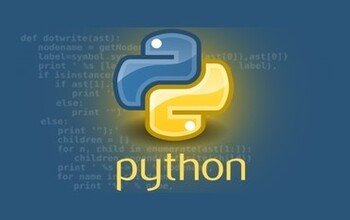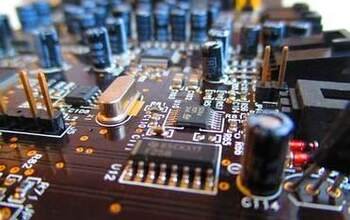Learn and Experience Real IoT Development only at Niltech Edu
Niltech Edu is part of a product development company, so you get to experience the technologies we work on. Our Embedded System Developer has build several products fro organisations like DRDO, Indian Airforce and many more using the tools which we provide in our Embedded System Training Course. At Niltech Edu our quality curriculum is designed with top-tier industries in mind, not academics, so you learn the high-impact skills that top companies want. Learn from Real Developers who can share their experiences of developing solutions and tackling problems for real world. There's no other place where you can get this.
What You Will Learn in Moderate IoT Course
The IoT course is aimed at providing high quality training to engineers as well as those who wish to enter this field. In this course, students can learn practical lessons and techniques used to design, implement, integrate and test software used for IoT systems. The course offers the trainees with detailed description of the life-cycle for designing multi-objective and multi-discipline IoT systems.
We guarantee our course to be very vast and covers huge number of implementation needed and used by industries. We teach you everything practically and focus on important skills like Reading and Understanding Datasheets which is very important skil for an IoT Engineer but almost nobody teaches you. Our Developers work with Industry and they know what is needed.
- 1. Introduction to IoT
- 2. IoT in Modern World
- 3. Use of Programming in IoT Systems
- 4. Basic Electronics
- 5. Basics of C Programming
- 6. Data Types in C Programming
- 7. Operators in C Programming
- 8. Embedded System in IoT
- 9. Microprocessors
- 10. Microcontrollers
- 11. Hardware Architectures
- 12. Working with Controllers
- 13. Working with Digital Values
- 14. Working with Analog Values
- 15. Working with Sensors
- 16. Working with Temperature Sensor
- 17. Working with Humidity Sensor
- 18. Working with Light Sensor
- 19. Working with Moisture Sensor
- 20. Working with Rain Sensor
- 21. Working with Sound Sensor
- 22. Working with Vibration Sensor
- 23. Working with Force Sensor
- 24. Working with Load Cell
- 25. Working with Actuators
- 26. Working with Relays
- 27. Working with DC Motors
- 28. Working with Servo Motors
- 29. Working with Stepper Motor
- 30. Working with Motor Drivers
- 31. Working with Linear Actuators
- 32. Working with Vibrators
- 33. Working with Solenoid Valve
- 34. Working with Water Pump
- 35. Working with Voltage Regulators
- 36. Working with Linear Voltage Regulators
- 37. Working with Switching Voltage Regulators
- 38. Working with Displays
- 39. Communication Protocols
- 40. UART Protocol
- 41. I2C Protocol
- 42. SPI Protocol
- 43. One- Wire Protocol
- 44. RS232 Protocol
- 45. RS485 Protocol
- 46. USB Protocol
- 47. Bluetooth Protocol
- 48. WiFi Protocol
- 49. ZigBee Protocol
- 50. MQTT Protocol
- 51. HTTP Protocol
- 52. Security of Protocols
- 53. Transferring Data (Wired)
- 54. Transferring Data (Wireless)
- 55. Working with GSM Module
- 56. Working with GPS Module
- 57. Working with Fingeprint Module
- 58. Working with Camera Module
- 59. Working with Advance Controllers
- 60. WiFI Enabled Microcontrollers
- 61. More Modern Microcontrollers
- 62. Uploading Data to IoT Server
- 63. Working with IoT Servers
- 64. Low Power Mode for IoT Devices
- 65. Introduction to More Powerful Boards
- 66. Understanding DataSheets
- Industry Oriented Projects
About IoT ( Internet of Things )
An IoT system is a microprocessor-based computer hardware system with software that is designed to perform a dedicated function, either as an independent system or as a part of a large system connected and communicating with Internet. At the core is an integrated circuit designed to carry out computation for real-time operations. Complexities range from a single microcontroller to a suite of processors with connected peripherals and networks; from no user interface to complex graphical user interfaces. The complexity of an IoT system varies significantly depending on the task for which it is designed. IoT system applications range from digital watches and microwaves to hybrid vehicles and avionics.
IoT has become an integral part of human lives though they are designed to function with minimal or no human interference. Aspects like low cost, compressed size, and simple design make them very popular. These systems, today, play a vital role in many devices, equipment instrumentation and home appliances and is likely to continue in the recent future. The Moderate IoT course is aimed at providing high quality training to engineers as well as those who wish to enter this field. In this course, students can learn practical lessons and techniques used to design, implement, integrate and test software used for advanced embedded systems. The course offers the trainees with detailed description of the life-cycle for designing multi-objective and multi-discipline embedded systems.




